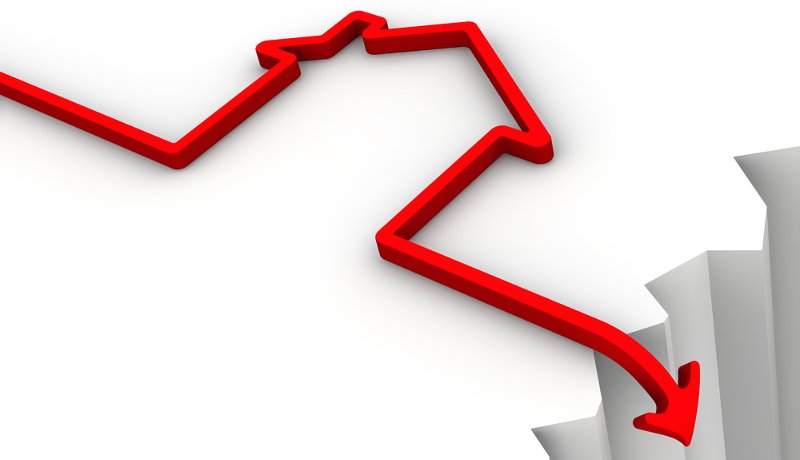June saw the first negative annual growth in house prices since 2012.

Whereas house prices grew by 1.8% year-on-year in May 2020, June has seen the first negative annual growth (-0.1%) since 2012.
On a monthly basis, house prices dropped 1.4% in June, compared to a drop of 1.7% in May.
The average house price, not seasonally adjusted, was £216,403 in June, where it was £218,902 the month before.
The average house price across all UK regions in Q2 of 2020 was £220,133; the annual change this quarter was 2.0%, compared to 2.5% last quarter.
London, with an average house price of £475,448, has seen an annual change of 2.1% this quarter, this is topped by the North West (4.8%), Scotland (4.0%) and South West (2.3%).
At the other end of the scale, the North has an average house price of £129,505 and has seen an annual change of 0.0% this quarter, compared to -0.3% last quarter.
Robert Gardner chief economist at Nationwide, said: “UK house prices fell by 1.4% in the month of June, after taking account of seasonal effects, following a 1.7% fall in May.
"On a seasonally adjusted basis, house prices in June were 3.2% lower than in April.
“Annual house price growth slowed to -0.1%, from 1.8% in May.
"This is the first time that annual house price growth has been in negative territory since December 2012.
“It is unsurprising that annual house price growth has stalled, given the magnitude of the shock to the economy as a result of the pandemic.
"Economic output fell by an unprecedented 25% over the course of March and April – almost four times more than during the entire financial crisis.
“Housing market activity also slowed sharply as a result of lockdown measures implemented to control the spread of the virus.
"While latest data from HMRC showed a slight pick-up in residential property transactions from April’s low, in May they were still 50% lower than the same month in 2019.
“Mortgage activity saw an even more dramatic slowdown – there were only 9,300 approvals for house purchase in May, down from 73,700 in February and 86% lower than in May 2019.
"However, our ability to generate the house price index has not been impacted to date, as sample sizes have remained sufficiently large (and representative) to generate robust results.
“With lockdown measures due to be eased in the weeks ahead, housing market activity is likely to edge higher in the near term, albeit remaining below pre-pandemic levels.
"Nevertheless, the medium-term outlook for the housing market remains highly uncertain.
"Much will depend on the performance of the wider economy, which will in turn be determined by how the pandemic and restrictions on activity evolve (including any behavioural shifts).
“The raft of policies adopted to support the economy, including to protect businesses and jobs, to support peoples’ incomes and keep borrowing costs down, should set the stage for a rebound once the shock passes, and help limit long-term damage to the economy.
“These same measures should also help ensure the impact on the housing market will ultimately be less than would normally be associated with an economic shock of this magnitude."
Gardner added: “House price growth across northern England as a whole (North, North West, Yorkshire & Humberside, East Midlands and West Midlands) converged with that in the south (London, Outer Metropolitan, Outer South East and East Anglia).
“Annual house price growth in London edged higher, with prices up 2.1% in Q2. Average prices in the capital are now just 3% below the all-time highs recorded in Q1 2017 and 55% above their 2007 levels (UK prices remain 19% higher than their 2007 peak).
“The surrounding Outer Metropolitan region also saw a modest pickup in annual price growth to 1.6%, while the neighbouring Outer South East region saw annual price growth edge up to 2.1%.
“The North was the weakest performing region, with prices unchanged compared with a year ago.
“Scotland was the strongest performing nation in Q2, with annual price growth picking up to 4.0%. Conditions remained subdued in Wales and Northern Ireland[1], which saw annual price growth of 1.0% and 0.1%, respectively.”
James Forrester, managing director at Barrows and Forrester, said: “While many will be quick to talk about the first negative rate of annual house price growth in nearly eight years, we need to process the latest figures with some common sense and calm.
"If you’ve been cut off at the knees, walking becomes pretty unrealistic, and so no one expected anything other than a property market stutter during this period of national lockdown.
"Unlike other historic market declines, this blip will very much go down in history with an asterisk by it.
"Some may say similar to Liverpool’s first title in 30 years.
"With the government also making the property market a primary focus of their broader recovery plan, this decline should be a short term one indeed. With any long-term damage unlikely to materialise.”
Marc von Grundherr, director of Benham and Reeves, added: “The first look at house price values during the most restricted period of lockdown was inevitably going to portray a market on its knees.
"However, the reality is buyers and sellers weren’t so much down and out, just forced to check out momentarily.
"With such a severe lack of market activity, there was only ever going to be sharp declines across the board, and this is something we know turned 360-degrees overnight once the market did reopen.
"As a result, we expect to see house price growth swing sharply in the opposite direction over the coming months as we move from one end of the scale to the other.
"With such unprecedented levels of activity flooding the market following its reopening, a return to form will be swift and should soon mitigate any artificially negative trends witnessed as a result of lockdown.”



